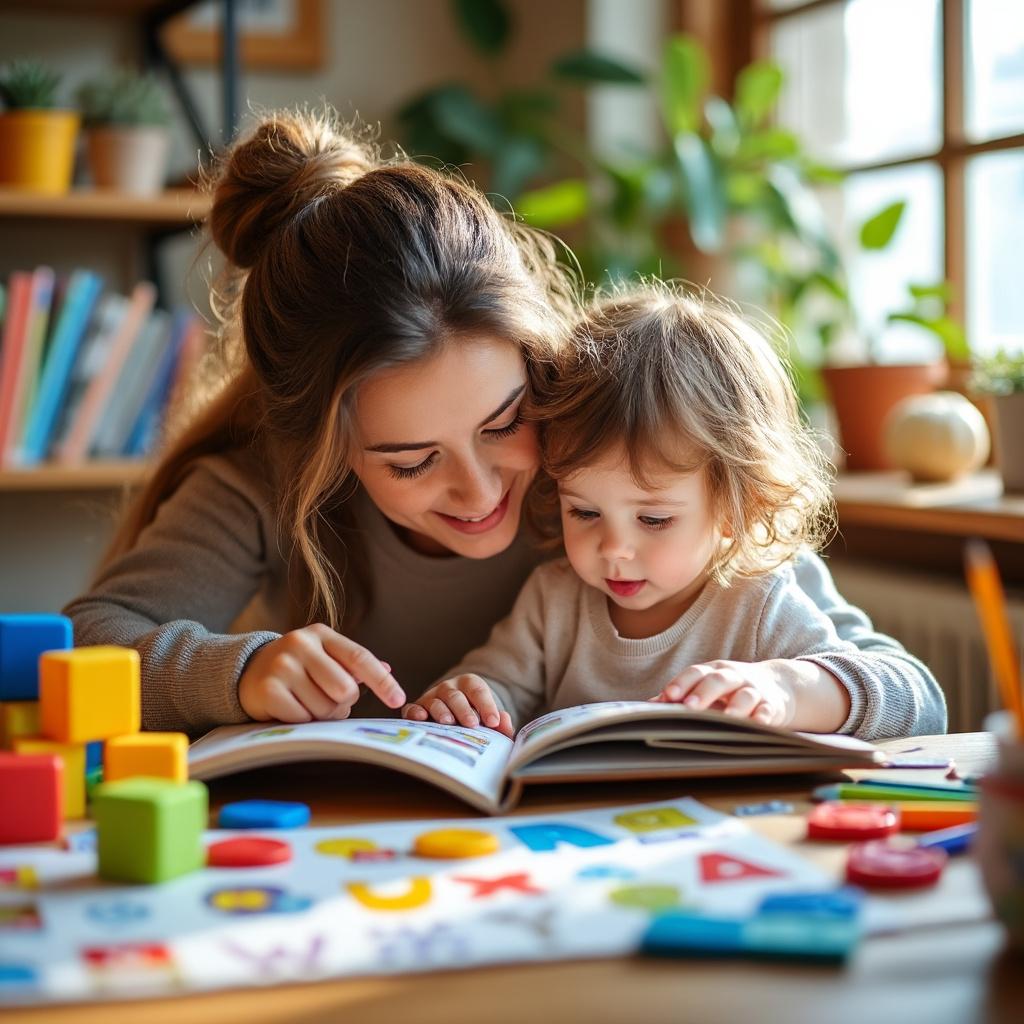From their very first coos to their first full sentences, language development is one of the most important milestones in a child’s early years. And while books, songs, and educational toys can help, the most powerful tools for developing language are often free, simple, and already in your home: your voice and your presence.
In this article, you’ll discover everyday ways to support your child’s language development naturally—without pressure or complicated techniques.
Why Early Language Development Is So Important
Strong language skills help children:
- Communicate their needs and emotions
- Build relationships
- Develop reading and writing abilities
- Think critically and solve problems
The earlier and more consistently you engage with your child, the stronger their communication foundation will be.
1. Talk to Your Baby—A Lot
Even before your baby can talk, they are listening, watching your mouth, and absorbing language. Narrate your day out loud:
- “Now we’re changing your diaper.”
- “I see a bird outside the window!”
- “Let’s put on your blue socks.”
This exposure helps them understand rhythm, tone, and vocabulary long before they speak.
2. Respond to Their Sounds
When your baby babbles or coos, respond like it’s a real conversation. Pause, smile, and talk back.
Example:
- Baby: “Ahhh”
- You: “Really? Tell me more!”
This back-and-forth builds the foundation for dialogue and teaches that communication is a two-way street.
3. Use Real Words—Not Just Baby Talk
It’s fine to use a playful tone, but use real vocabulary. Instead of saying “ba-ba” for bottle, say “bottle.” Clear words help children learn correct pronunciation and meaning.
You can repeat or expand:
- Child: “Doggy!”
- You: “Yes, that’s a big brown dog!”
4. Read Together Every Day
Reading is one of the most powerful ways to support language development. Start as early as infancy.
Tips for reading with little ones:
- Use books with large pictures and simple words
- Let your child turn pages or point to pictures
- Ask open-ended questions: “What do you see here?”
Make reading part of your daily routine, like before naps or bedtime.
5. Sing Songs and Nursery Rhymes
Songs help with:
- Vocabulary
- Pronunciation
- Memory
- Rhythm and rhyme awareness
Even if you’re not a great singer, your child loves your voice. Repeat favorite songs, clap along, and use hand motions to make it interactive.
6. Describe What You’re Doing
As you go through your day, narrate actions out loud:
- “I’m cutting the apple now.”
- “Let’s wash your hands—wet, soap, rinse!”
This teaches new words and connects them to real experiences.
7. Avoid Overcorrecting
If your child mispronounces or mixes up words, there’s no need to point out errors harshly.
Instead of:
❌ “No, it’s not ‘gog’—say ‘dog’!”
Try:
✅ “Yes, that’s a dog! You saw the big dog!”
Model the correct form gently. Your child will learn naturally over time.
8. Follow Their Interests
Talk about what your child is focused on. If they’re obsessed with trucks, animals, or dinosaurs—use that topic to teach vocabulary.
- “That’s a fire truck. It has a ladder.”
- “The lion is roaring—he’s loud!”
Following their curiosity keeps them engaged.
9. Give Them Time to Speak
It’s tempting to jump in and finish their sentences, especially when they’re struggling. But pauses are important. Give your child time to process and express themselves.
- Use patient eye contact
- Avoid rushing or correcting mid-sentence
- Show that you’re listening
This builds confidence and helps them learn at their pace.
10. Limit Passive Screen Time
While some screen content can support language, it should never replace human interaction.
- Prioritize face-to-face talking
- Watch shows together and talk about what you see
- Use screen time as a tool—not a babysitter
Children learn language through interaction, not just exposure.
11. Use Gestures and Facial Expressions
Nonverbal communication supports verbal development. Point to objects, use hand motions, and exaggerate facial expressions while talking.
Example:
- “The airplane goes up!” (raise hand to show flying)
This helps connect words to meaning—especially for toddlers.
12. Encourage Storytelling and Imagination
As your child grows, invite them to tell their own stories or describe events:
- “What happened at the park today?”
- “Let’s make up a story about your stuffed animals.”
This helps with sentence structure, creativity, and vocabulary.
Final Thought: Be Present, Be Playful, Be Patient
Language development doesn’t require fancy tools—it requires connection. By talking, listening, playing, reading, and responding with love, you’re giving your child exactly what they need.
Celebrate the first sounds, the silly mispronunciations, the endless “why” questions. These are signs that your child’s brain is growing—and you’re a part of that journey.
